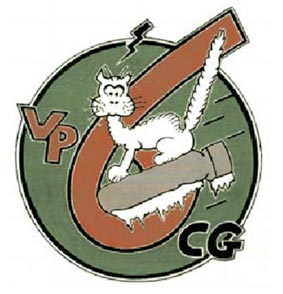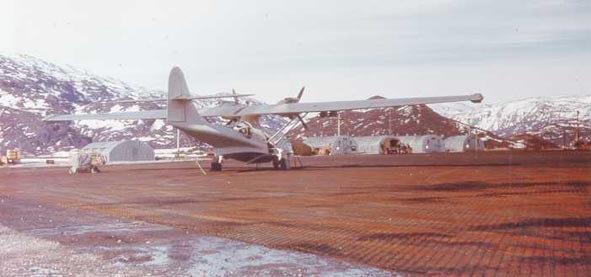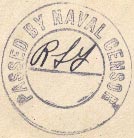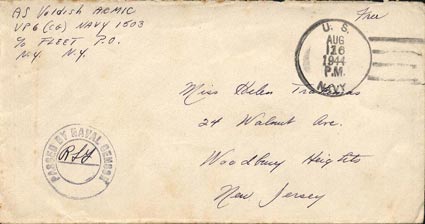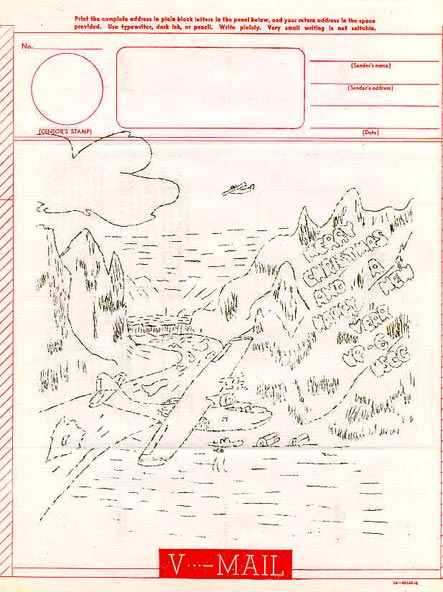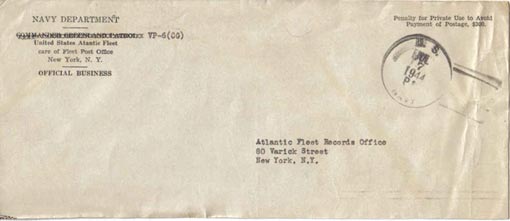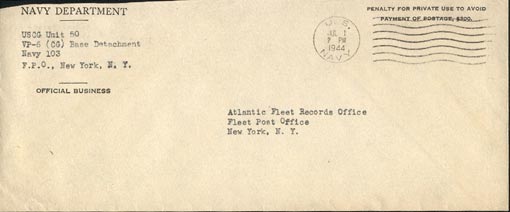|
Chronology of Significant
Events |
|
5 Oct 1943 |
VP-6 (CG) was established as a Guard squadron under Navy operational control at NAS Argentia, Newfoundland, relieving VB-126. Squadron personnel had actually been arriving since 23 July 1943, by NATS. Upon arrival they commenced training and indoctrination in cold weather operations. The squadron's home port was Narsarssuak, Greenland, code name Bluie West-One (BW-1). Upon establishment it came under the operational control of CTF-24, and administrative control of FAW-9. Personnel matters continued to be handled by Coast Guard Headquarters. The squadron flew the PBY-5A Catalina, with ten aircraft (one designated as a spare), 22 officers and 145 enlisted, including eight enlisted pilots. Operational flights began on 13 October 1943, after the first three PBY-5A
Catalina's arrived at Narsarssuak. Two of the squadron's nine operational aircraft were detached to NAS Argentia. These aircraft and crews were rotated frequently to allow maintenance and repair work to be done on the other seven. At Narsarssuak all the squadron's aircraft sat outside and all maintenance,
refueling and arming took place in the open regardless of weather conditions because it was found that moving aircraft from warm hangars to the cold outside resulted in condensation and subsequent freezing in fuel pumps, controls and instruments. Herman Nelson F-1 portable heaters were needed to warm the engines and the aircraft interiors before starting. Crews were relieved every 12 months, with relief crews staggered every four months. The U.S. Army provided aerology support and daily weather briefings. |
|
May 1944 |
By early 1944 the field at BW-1 was becoming crowded with aircraft making emergency landings while enroute to Europe. The squadron complement of aircraft was also increased at this time, from 10 PBY-5A
Catalina's to 12. This did not add to the overcrowding at the field, as most of the squadron's aircraft were dispersed to remote bases. |
|
Jul - Sep 1944 |
A detachment of two aircraft was sent to the Canadian Arctic to furnish ASW, air cover, reconnaissance and search and rescue for vessels entering the Hudson Bay. Patrols covered northern Labrador, Baffin Island and Cumberland Island. No Navy or Coast Guard ground support was available to these crews, despite the frequent bad weather operations flown by the detachment. Existing Army advanced facilities were utilized when available. The Catalina aircraft had no interior heaters, nor did the crews have heated flying suits. Several crews came down with frostbite during operations. |
|
Jul - Aug 1944 |
A detachment of two aircraft was sent to RAF Base Reykjavik, Iceland, operating in conjunction with the RAF Coastal Command, to provide coverage and air support to vessels conducting operations against the Germans in waters off northeastern Greenland. |
|
1 - 30 Nov 1944 |
The detachment at Argentia was increased to three aircraft. Two more aircraft were sent to work with the RAF Coastal Command at Reykjavik. |
|
Dec 1944 |
Six aircraft remained at NAF Narsarssuak, with the other four at NAS Argentia, until April 1945. The squadron then increased the Argentia detachment by one aircraft. |
|
8 May 1945 |
With the cessation of hostilities in Europe and resulting surrender of all Axis submarines, the mission of the squadron was changed to ice patrols and air-sea rescue. |
|
June 1945 |
The VPB-6 (CG) complement of aircraft was reduced from nine to six, with one spare. This came at a very bad time, as the surrender of Germany meant the return of thousands of aircraft back to the U. S., with many getting lost, and others landing on the ice. |
|
10 July 1945 |
VPB-6 was transferred back to the control of Commander, U. S. Coast Guard. |
